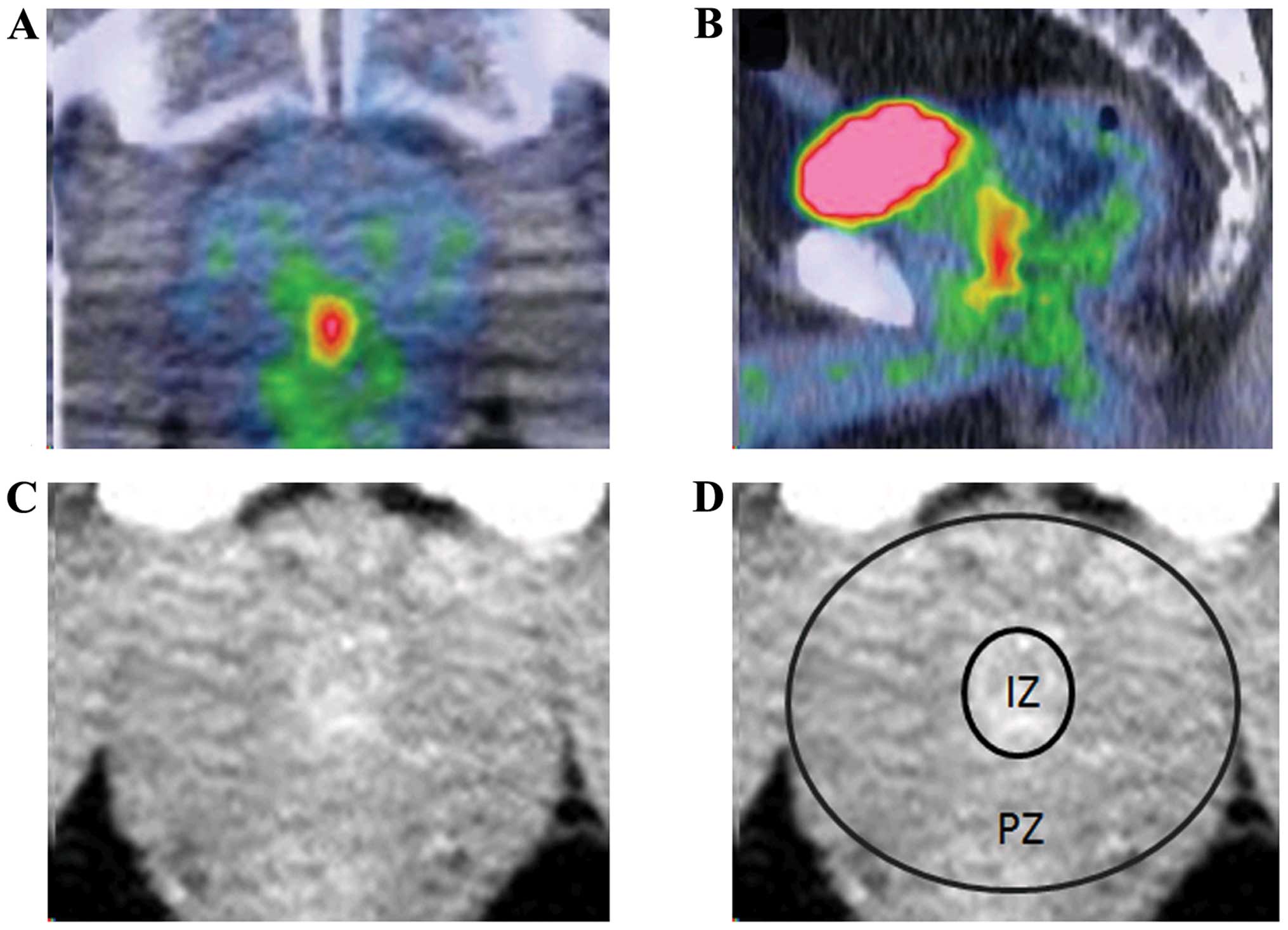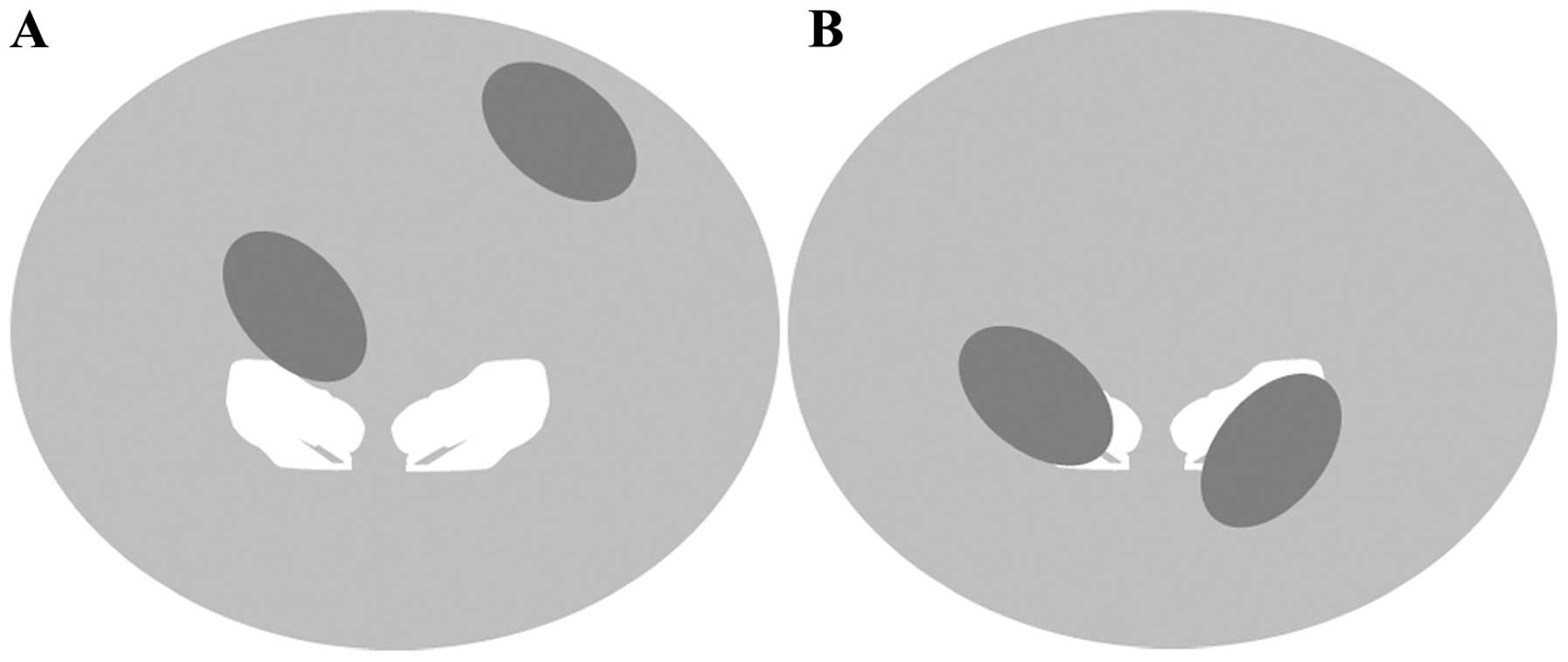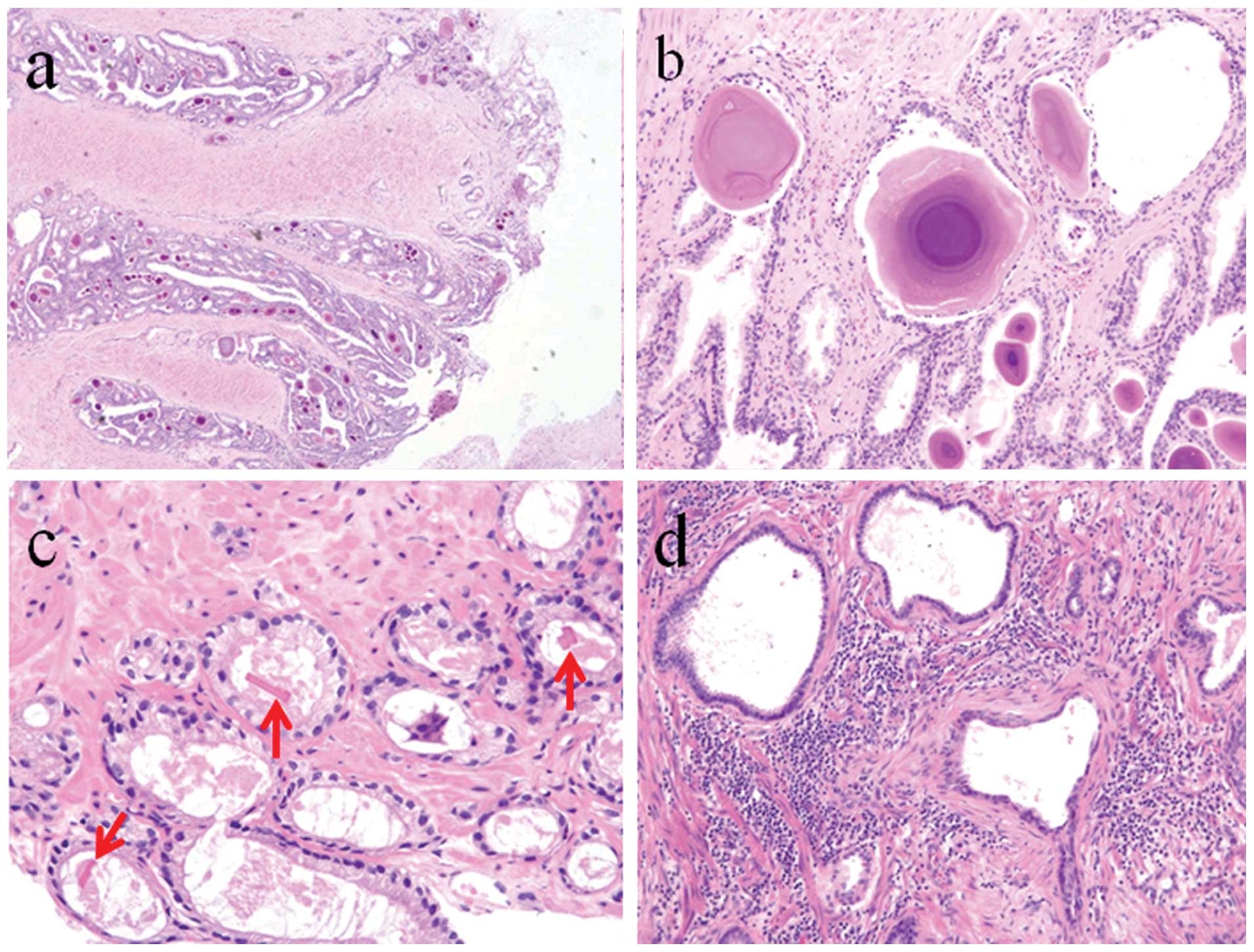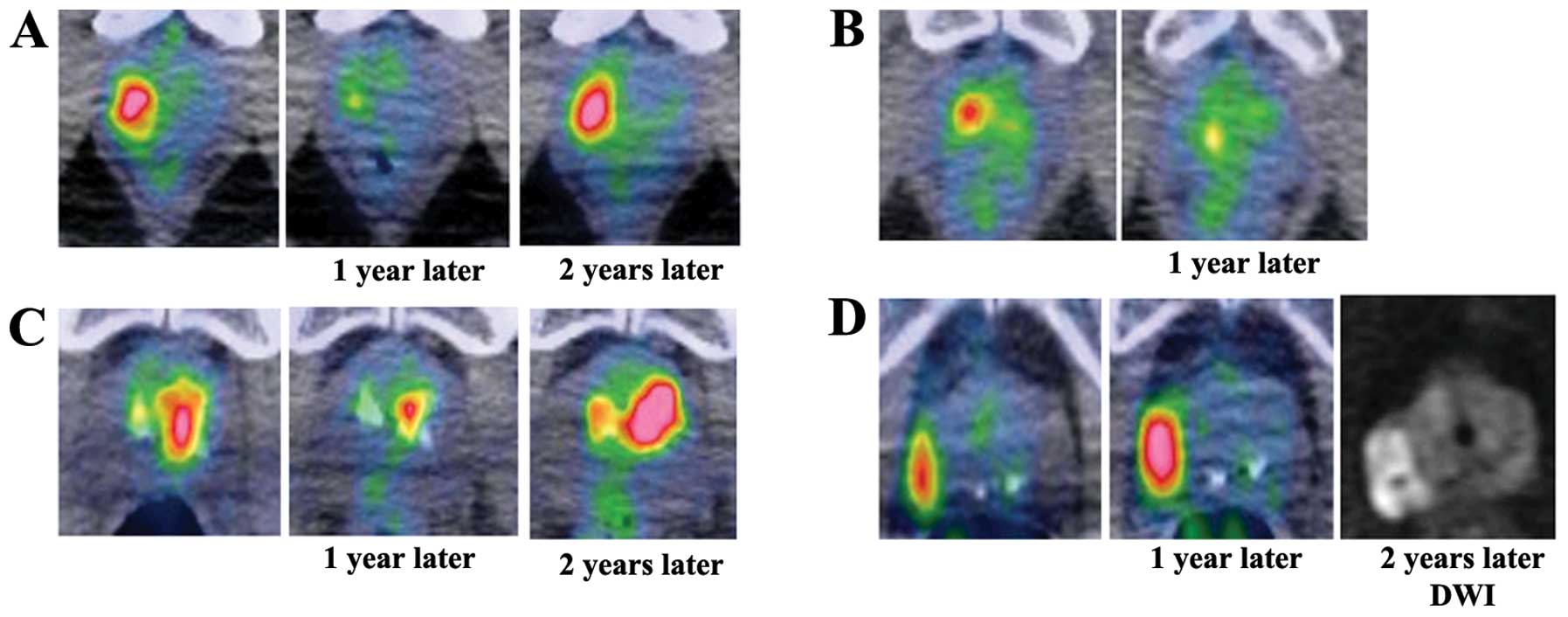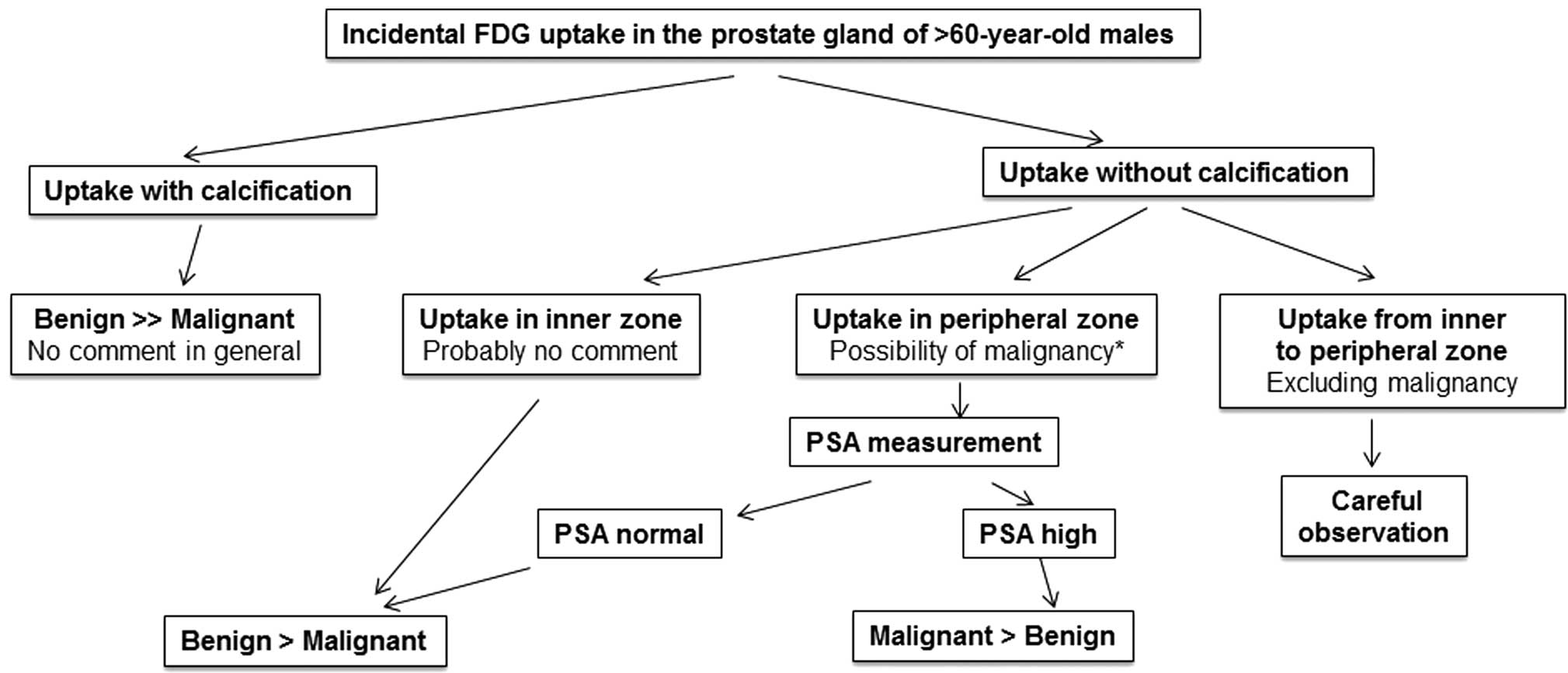|
1
|
Phelps ME: PET: the merging of biology and
imaging into molecular imaging. J Nucl Med. 41:661–681.
2000.PubMed/NCBI
|
|
2
|
Gambhir SS: Molecular imaging of cancer
with position emission tomography. Nat Rev Cancer. 2:683–693. 2002.
View Article : Google Scholar : PubMed/NCBI
|
|
3
|
Cho SK, Choi JY, Yoo J, Cheon M, Lee JY,
Hyun SH, Lee EJ, Lee KH and Kim BT: Incidental focal
18F-FDG uptake in the prostate: clinical significance
and differential diagnostic criteria. Nucl Med Mol Imaging.
45:192–196. 2011.
|
|
4
|
Effert PJ, Bares H, Handt S, Wolff JM,
Büll U and Janse G: Metabolic imaging of untreated prostate cancer
by PET with 18fluorine labeled deoxyglucose. J Urol.
155:994–998. 1996. View Article : Google Scholar : PubMed/NCBI
|
|
5
|
Hofer C, Laubenbacher C, Block T, Breul J,
Hartung R and Schwaiger M: Fluorine-18-fluorodeoxyglucose positron
emission tomography is useless for the detection of local
recurrence after radical prostatectomy. Eur Urol. 36:31–35. 1999.
View Article : Google Scholar : PubMed/NCBI
|
|
6
|
Takahashi N, Inoue T, Lee J, Yamaguchi T
and Shizukuishi K: The roles of PET and PET/CT in the diagnosis and
management of prostate cancer. Oncology. 72:226–233. 2007.
View Article : Google Scholar : PubMed/NCBI
|
|
7
|
Kao PF, Chou YH and Lai CW: Diffuse FDG
uptake in acute prostatitis. Clin Nucl Med. 33:308–310. 2008.
View Article : Google Scholar : PubMed/NCBI
|
|
8
|
Liu IJ, Zafar MB, Lai YH, Segall GM and
Terris MK: Fluorodeoxyglucose positron emission tomography studies
in diagnosis and staging of clinically organ-confined prostate
cancer. Urology. 57:108–111. 2001. View Article : Google Scholar : PubMed/NCBI
|
|
9
|
Dong C and Hemminki K: Second primary
neoplasms among 53 159 haemotolymphoproliferative malignancy
patients in Sweden, 1958–1996 a search for common mechanisms. Br J
Cancer. 85:997–1005. 2001.PubMed/NCBI
|
|
10
|
Ueno M, Muto T, Oya M, Ota H, Azekura K
and Yamaguchi T: Multiple primary cancer: an experience at the
Cancer Institute Hospital with special reference to colorectal
cancer. Int J Clin Oncol. 8:162–167. 2003. View Article : Google Scholar : PubMed/NCBI
|
|
11
|
Leön X, Ferlito A, Myer CM III, Saffiotti
U, Shaha AR, Bradley PJ, Brandwein MS, Anniko M, Elluru RG and
Rinaldo A: Second primary tumors in head and neck cancer patients.
Acta Otolaryngol. 122:765–778. 2002.
|
|
12
|
Han EJ, HOJ, Choi WH, Yoo IR and Chung SK:
Significance of incidental focal uptake in prostate on
18-fluro-2-deoxyglucose positron emission tomography CT images. Br
J Radiol. 83:915–920. 2010. View Article : Google Scholar : PubMed/NCBI
|
|
13
|
Hwang I, Chong A, Jung SI, Hwang EC, Kim
SO, Kang TW, Kwon DD, Park K and Ryu SB: Is further evaluation
needed for incidental focal uptake in the prostate in
18-fluori-2-deoxyglucose positron emission tomography-computed
tomography images? Ann Nucl Med. 27:140–145. 2013. View Article : Google Scholar
|
|
14
|
McNeal JE: The zonal anatomy of the
prostate. Prostate. 2:35–49. 1981. View Article : Google Scholar : PubMed/NCBI
|
|
15
|
Kilmas R, Bennett B and Gardner WA Jr:
Prostate calculi: a review. Prostate. 7:91–96. 1985. View Article : Google Scholar
|
|
16
|
Eykyn S, Bultitude MI, Mayo ME and
Lloyd-Davies RW: Prostatic calculi as a source of recurrent
bacteriuria in the male. Br J Urol. 46:527–532. 1974.PubMed/NCBI
|
|
17
|
Meares EM: Infection stones of prostate
gland. Laboratory diagnosis and clinical management. Urology.
4:560–566. 1974. View Article : Google Scholar : PubMed/NCBI
|
|
18
|
Cross PA, Bartley CJ and McClure J:
Amyloid in prostatic corpora amylacea. J Clin Pathol. 45:894–897.
1992. View Article : Google Scholar : PubMed/NCBI
|
|
19
|
Bock E, Calugi V, Stolfi V, Rossi P,
D’Ascenzo R and Solivetti FM: Calcifications of the prostate: a
transrectal echographic study. Radiol Med. 77:501–503. 1989.(In
Italian).
|
|
20
|
Cohen RJ, McNeal JE, Redmond SL, Meehan K,
Thomas R, Wilce M and Dawkins HJ: Luminal contents of benign and
malignant prostatic glands: correspondence to altered secretory
mechanisms. Hum Pathol. 31:94–100. 2000. View Article : Google Scholar : PubMed/NCBI
|
|
21
|
Luna More S: Argyrophil crystalloids in
adenocarcinoma of the prostate. Prostate. 24:309–315.
1993.PubMed/NCBI
|
|
22
|
Luna More S, Florez P, Ayala A, Diaz F and
Santos A: Neutral and acid mucins and eosinophilic and argyrophil
crystalloids in carcinoma and atypical adenomatous hyperplasia of
the prostate. Pathol Res Pract. 193:291–298. 1997.PubMed/NCBI
|
|
23
|
Epstein JI: Diagnostic criteria of limited
adenocarcinoma of the prostate on needle biopsy. Hum Pathol.
26:223–229. 1995. View Article : Google Scholar : PubMed/NCBI
|
|
24
|
Lee R, Localio AR, Armstrong K, Malkowicz
SB and Schwartz JS: A meta-analysis of the performance
characteristics of the free prostate-specific antigen test.
Urology. 67:762–768. 2006. View Article : Google Scholar : PubMed/NCBI
|
|
25
|
Wefer AE, Hricak H, Vigneron DB, Coakley
FV, Lu Y, Wefer J, Meller-Lisse U, Carroll PR and Kurhanewicz J:
Sextant localization of prostate cancer: comparison of sextant
biopsy, magnetic resonance imaging and magnetic resonance
spectroscopic imaging with step section histology. J Urol.
164:400–404. 2000. View Article : Google Scholar
|
|
26
|
De Marzo AM, Platz EA, Sutcliffe S, Xu J,
Grönberg H, Drake CG, Nakai Y, Issacs WB and Nelson WG:
Inflammation in prostate carcinogenesis. Nat Rev Cancer. 7:256–269.
2004.
|
|
27
|
Vral A, Magri V, Montanari E, Gazzano G,
Gourvas V, Marras E and Perletti G: Topographic and quantitative
relationship between prostate inflammation, proliferative
inflammatory atrophy and low-grade prostate intraepithelial
neoplasia: a biopsy study in chronic prostatitis patients. Int J
Oncol. 41:1950–1958. 2012.
|
|
28
|
McNeal JE, Redwine EA, Freiha FS and
Stamey TA: Zonal distribution of prostatic adenocarcinoma.
Correlation with histologic pattern and direction of spread. Am J
Surg Pathol. 12:897–906. 1988. View Article : Google Scholar : PubMed/NCBI
|















